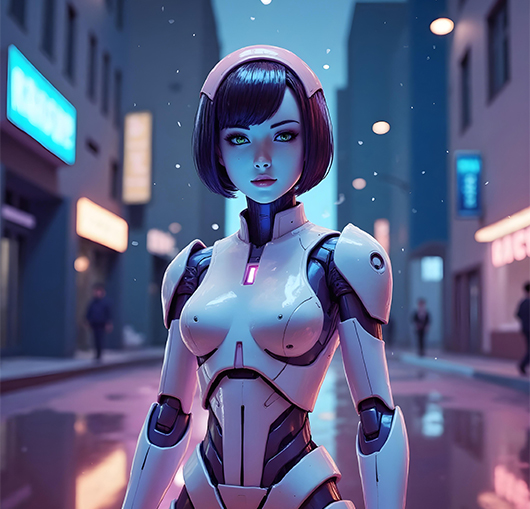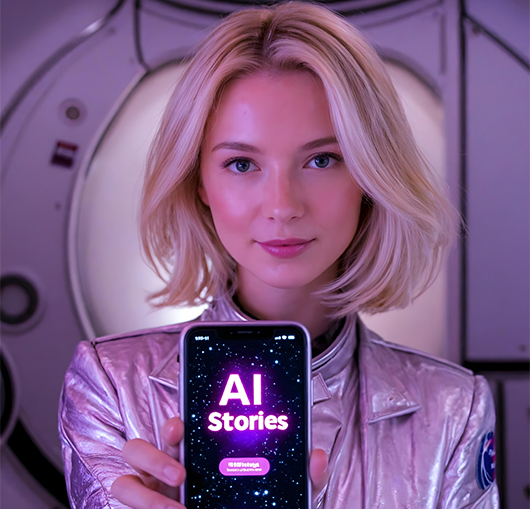How Tesla is Using AI for Full Self-Driving
Autonomous vehicles or driverless cars are no longer a product of a distant future; they are quickly paving the present, and Tesla is the company that is dominating this market by being AI-first. By 2025, the Full Self-Driving (FSD) system will have already accumulated over 1.2 billion miles on autonomous mode, which is much more than any other carmaker. As a McKinsey report (2024) says, the worldwide autonomous vehicle industry is expected to grow to a size of $300 billion in the next decade (2030), with AI and machine learning serving as the enabling practice.
In contrast to its competitors, drawing on LiDAR, Tesla prefers to use a vision-based artificial intelligence solution that is fitted with neural networks that have been trained with large volumes of real-life data. Tesla is not only developing cars; it is developing intelligent machines to drive itself with its sophisticated Dojo supercomputer, using perceiving cameras, and having its cars learn continuously.
But how does Tesla use artificial intelligence solutions? And what makes its approach so different? So, what do you think? Let us have a more detailed look at it.
Key Insights
- Tesla uses AI and deep learning to process real-time driving data and make on-the-fly decisions.
- The Full Self-Driving (FSD) system relies on neural networks trained on billions of miles of real-world driving.
- Tesla’s unique approach removes LiDAR and instead uses vision-based AI from camera input.
- Tesla’s Dojo supercomputer and fleet learning strategy continuously improve the performance of its artificial intelligence cars.
- Tesla machine learning techniques allow its vehicles to learn from both individual and fleet-wide driving experiences.
What Is Tesla’s Full Self-Driving (FSD) System?
Tesla has developed an advanced system of driver-assistance FSD (Full-Self Driving), which is intended to facilitate complete autonomous control of vehicle operations. That will one day be able to drive itself and not need a human driver. It is an extension of the current Tesla Autopilot, which includes an extra level of capabilities of AI-based decision-making.
FSD therefore has a number of important features that are not fully independent according to the official SAE Level 5 definition, but include:
- Auto Lane Change
- Navigate on Autopilot
- Traffic Light and Stop Sign Control
- Smart Summon
- Autopark
Tesla’s proprietary AI models’ power all of this.
How Does Tesla Use Artificial Intelligence?
The self-driving engine of Tesla can be widely attributed to deep neural networks that imitate how people get to drive. They are not pre-programmed, learning from actual driving data, and with time, improving themselves.
1. Neural Networks Vision-Based
Tesla does not use LiDAR (Light Detection and Ranging) as many other competitors do; instead, it uses perception systems that rely on cameras. Tesla cars have eight exterior cameras, which, together with visual information, go to onboard computers, which perform Artificial Intelligence models to detect objects, road signs, lane stripes, pedestrians, and other cars.
Such models are set by training in order to recognize and react to real-world traffic situations in real-time, just like a human being, but by processing faster and storing more information.
2. Tesla Machine Learning at Scale
The machine learning pipeline utilized by Tesla gathers and analyzes huge amounts of driving data provided by its vehicles in millions of spread around the world. This is to teach its artificial intelligence models to identify edge cases, unusual or highly complex driving situations that demand special actions.
This is where fleet learning comes in. Provided the car gets into a new situation and learns the lesson, such knowledge could be transferred to the larger Tesla family through over-the-air (OTA) updates.
3. Mock and Real Data
Although real-world driving provides unfiltered, raw data, it is usually not complete or lacks consistency. The result is that Tesla mixes it with synthetic data in order to generate complex scenarios of driving. Such simulated worlds enable training the AI at a higher speed and with better control over edge-case variables.
The Role of Tesla’s Dojo Supercomputer
Tesla has developed a special supercomputer, named Dojo, specifically to train its AI models, which is optimized to work with deep learning tasks. Dojo runs video and sensor petabytes of data at unprecedented speeds.
It significantly reduces training time and enhances Tesla’s ability to update its AI models more frequently, thereby improving both the safety and performance of Tesla artificial intelligence cars.
- Dojo’s advantages include:
- Massive parallel processing capabilities
- Low-latency performance for video-based neural nets
- Scalability across billions of data points
Tesla AI Day: Key Insights
During Tesla AI Day, Elon Musk and his team revealed in-depth details about Tesla’s AI infrastructure, including:
HydraNets: Sophisticated representations of neural networks that assist in the handling of various perception tasks at the same time
Occupancy Networks: Applied to generate 3D spatial learning 3D camera inputs
Neural Net Planner: A tool that plans the driving routes, and these are calculated on the basis of millions of historical situations
Through these innovations, we see the application of artificial intelligence used by the Tesla company not just to detect and respond but also to predict and plan.
Comparing Tesla with Traditional Self-Driving Systems
| Feature | Tesla Approach | Traditional Competitors |
|---|---|---|
| Sensor Stack | Vision (Camera-based only) | LiDAR, Radar + Cameras |
| AI Training | Fleet + Simulated Learning | Limited real-world input |
| Data Updates | Over-the-air (OTA) | Manual or dealer-based |
| Computing Infrastructure | Dojo Supercomputer | Off-the-shelf systems |
| Philosophy | “AI Vision First” | Sensor Redundancy Focus |
The boldness of Tesla not to use LiDAR became a controversial move. Still, it has now been discovered that it is possible to train neural nets with billions of video frames, and this feature has promoted their efficiency.
Challenges Tesla Faces with AI-Based Autonomy
Some people are using the relatively new approach by Tesla, though there are some obstacles:
1- Regulatory Traps: The majority of countries do not have any clear regulations concerning driving in fully autonomous vehicles.
2- Edge Case Sensitivity: AI can still not handle unusual and uncommon cases very well.
3- Misunderstanding of the user intentions or usage: FSD has an opportunity to be abused by those drivers who overestimate its existing functions.
Tesla is well aware of these concerns and keeps asserting that drivers must still be alert at all times, especially until the time when actual Level 5 autonomy is in full swing.
The Future of Tesla Artificial Intelligence Cars
Tesla isn’t just building cars; it’s building AI-powered robots on wheels. The potential extends beyond personal driving, robotaxis, logistics, and urban mobility networks are on the horizon.
According to Elon Musk, Tesla plans to introduce a robotaxi service once FSD reaches regulatory approval. These autonomous cars will use shared AI to operate more efficiently than human drivers ever could.
Furthermore, Tesla’s AI expertise may expand beyond automotive into its humanoid robot project (Tesla Bot), signaling a future where machine learning and robotics converge to assist humans in daily life.
Final Thoughts
Electric vehicles are not the only innovation that is revolutionizing transportation by Tesla, but also AI-driven autonomy. Neural networks trained on a camera and the Dojo supercomputer: Tesla has demonstrated how and why artificial intelligence is reshaping the potential of cars.
However, the journey towards full self-driving will not be easy, and it is full of regulatory, technical, and ethical challenges, but the use of AI suggests that Tesla is in the vanguard of autonomous mobility innovations.
Whether you are interested in what can happen next to the autonomous driving technology or not, it is good to follow the development of AI systems in Tesla. This is certain: Tesla’s machine learning playbook is already transforming the roads of the future.
FAQs
Is Tesla an artificial intelligent car?
Yes, Tesla extensively utilizes the services of artificial intelligence in its Full Self-Driving system, which is applied mainly with the help of vision-based deep learning and neural networks.
What kind of training is done on Tesla AI?
Tesla teaches its AI not only with real driving information gathered on its entire fleet but also with simulated driving conditions and trains it in its Dojo supercomputer.
How is AI of Tesla unique?
The feature set of Tesla includes the use of cameras only (no LiDAR), incomparable data-gathering (including fleet learning), and consistent updates provided over the air.
Does Tesla use artificial intelligence?
Yes, Tesla heavily utilizes artificial intelligence across its operations. From self-driving technology and AI-powered manufacturing to personalized customer experiences, AI is a core component of Tesla’s innovation and differentiation.
How does Tesla use artificial intelligence?
Tesla uses artificial intelligence (AI) in several key areas, most notably in its self-driving technology, manufacturing processes, and predictive maintenance.


